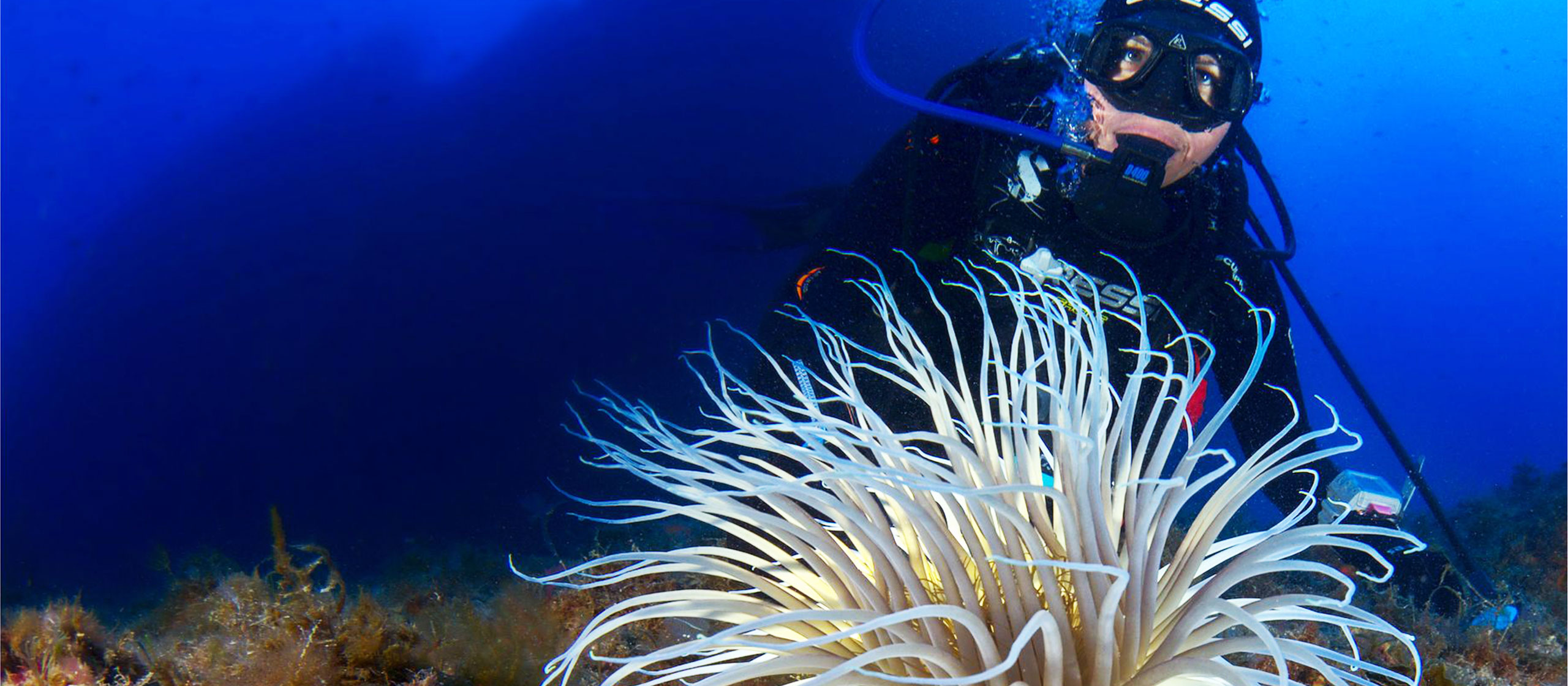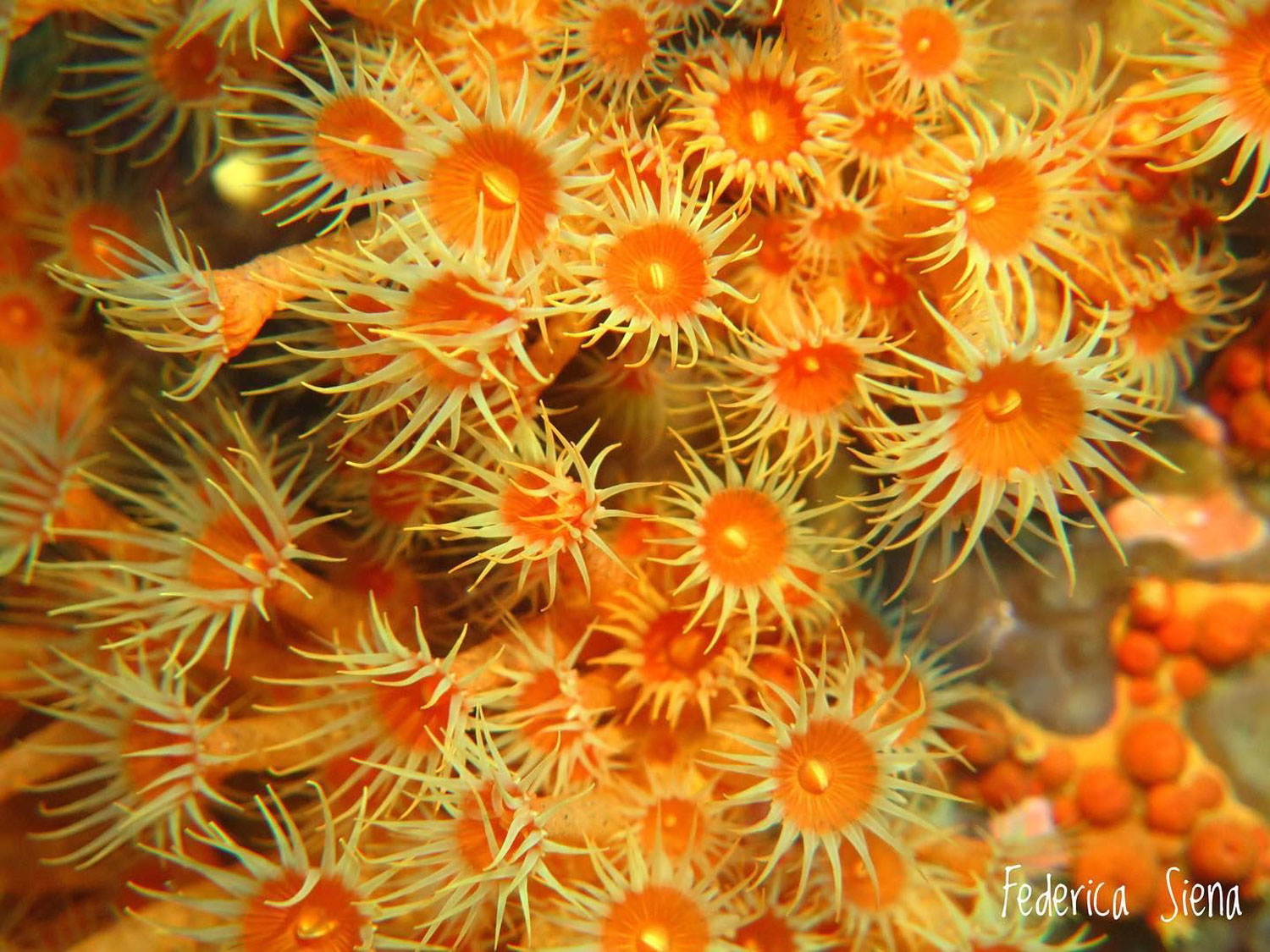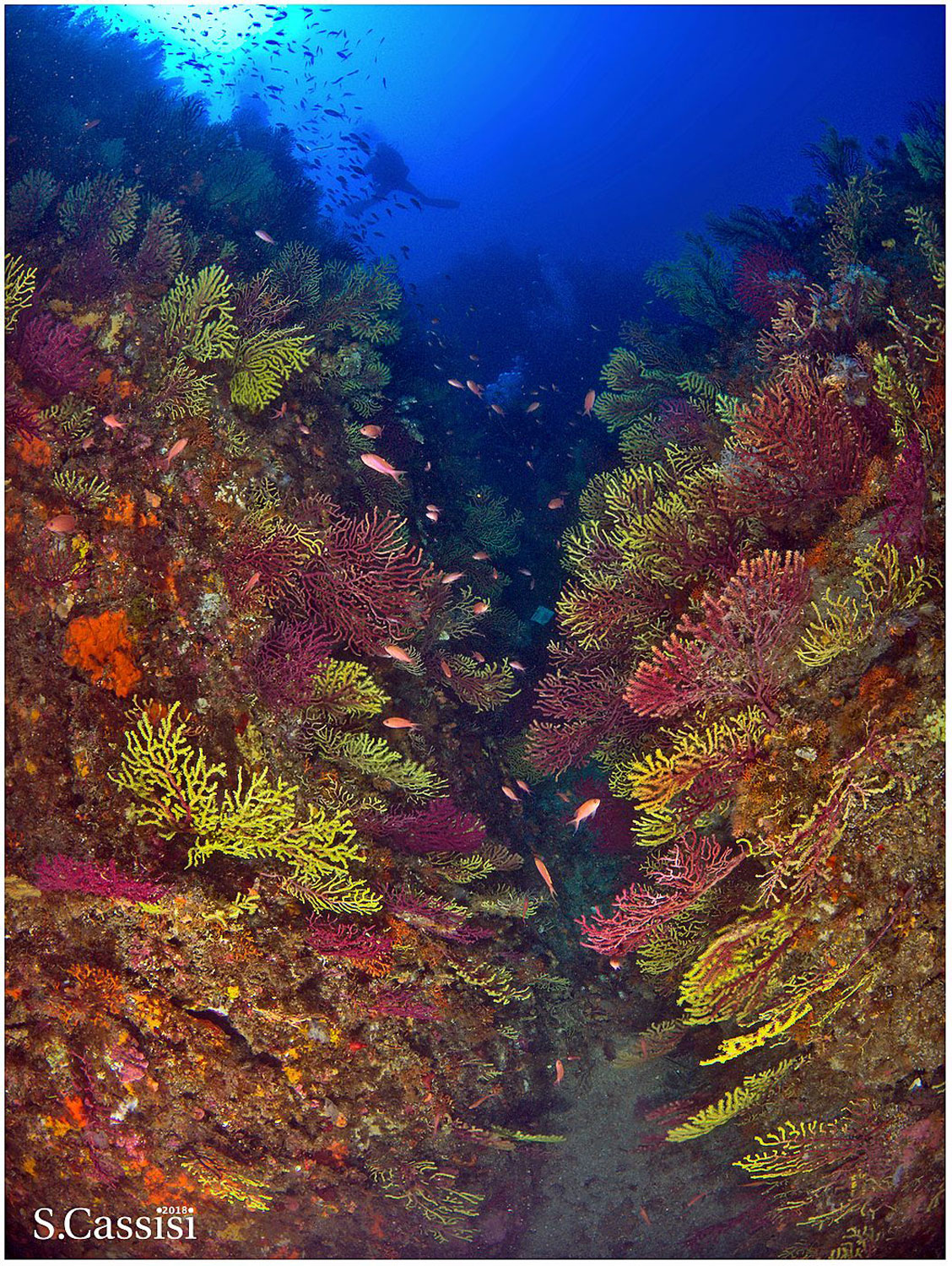Dive stories
Rediscover Local Diving: The Mountain of Scilla
A year of pandemic: very little to celebrate!
It has been over a year since the spread of Covid began. We had our first lockdown here in Italy in March 2020. Since then we haven't returned to normality yet. We had our ups and downs with a long period of total confinement at the start of the pandemic, when we scared and isolated, to a brief pause where everything seemed to be moving towards a recovery last summer. But between autumn and winter, we found ourselves in isolation again, with a curfew to deal with. It is true that the situation has eased a bit compared to the first lockdown. The main challenge isn’t fear or terror anymore, but a general sense of tiredness of bearing all the difficulties, economical and social, related to those restrictions that this ongoing pandemic has forced us to face. And maybe without realizing it, we are all a little bit more relaxed during this period where we remain in semi-lockdown at the request of the government.

Merry Christmas and Happy New Year… so to speak!
This last Christmas was very unusual, at least compared to how we are used to celebrate here in the south: no huge table with uncles, cousins, nephews, who gathered to eat a dinner with many courses. It was just a brief meal with mum and dad, then back home. And then the arrival of the new year with everyone doing the countdown at home, respecting the curfew. We all still celebrated in some way, hoping that at midnight the spell would be broken and this unlucky 2020 we'd all like to forget, would finally be over. The reality is that until now little or nothing has changed.
The government has introduced the idea of colors. Every region has a color that is assigned depending on its status: yellow, orange or red. These signify areas where the risk of infection is lowest, regions with medium risk, and places where the risk of infection is very high. And for each color there are different rules. Despite the outbreaks, in Calabria where I live, the risk has been among the lowest. However it was designated a red zone at the start of the second wave, with some orange intermission, because the healthcare system hasn't worked as it should.
A glimpse of light
Fortunately, the colors began to change. With a new law introduced in early February, many regions of Italy has been put back to yellow, including Calabria. Schools have opened, various businesses that had closed, have opened their doors and life has restarted again for many, although a bit slowly. In all this, the expectations of soon having a vaccine has been a real glimpse of light ahead. However for those who are not advanced in age, are in good health and aren’t working in health care, there’s no information on when or where they will be able to receive it. Despite some challenges, the vaccination campaign is currently underway for healthcare professionals and people over 80. Now we just wait, a little more trustful and a bit more tired after this strange year.
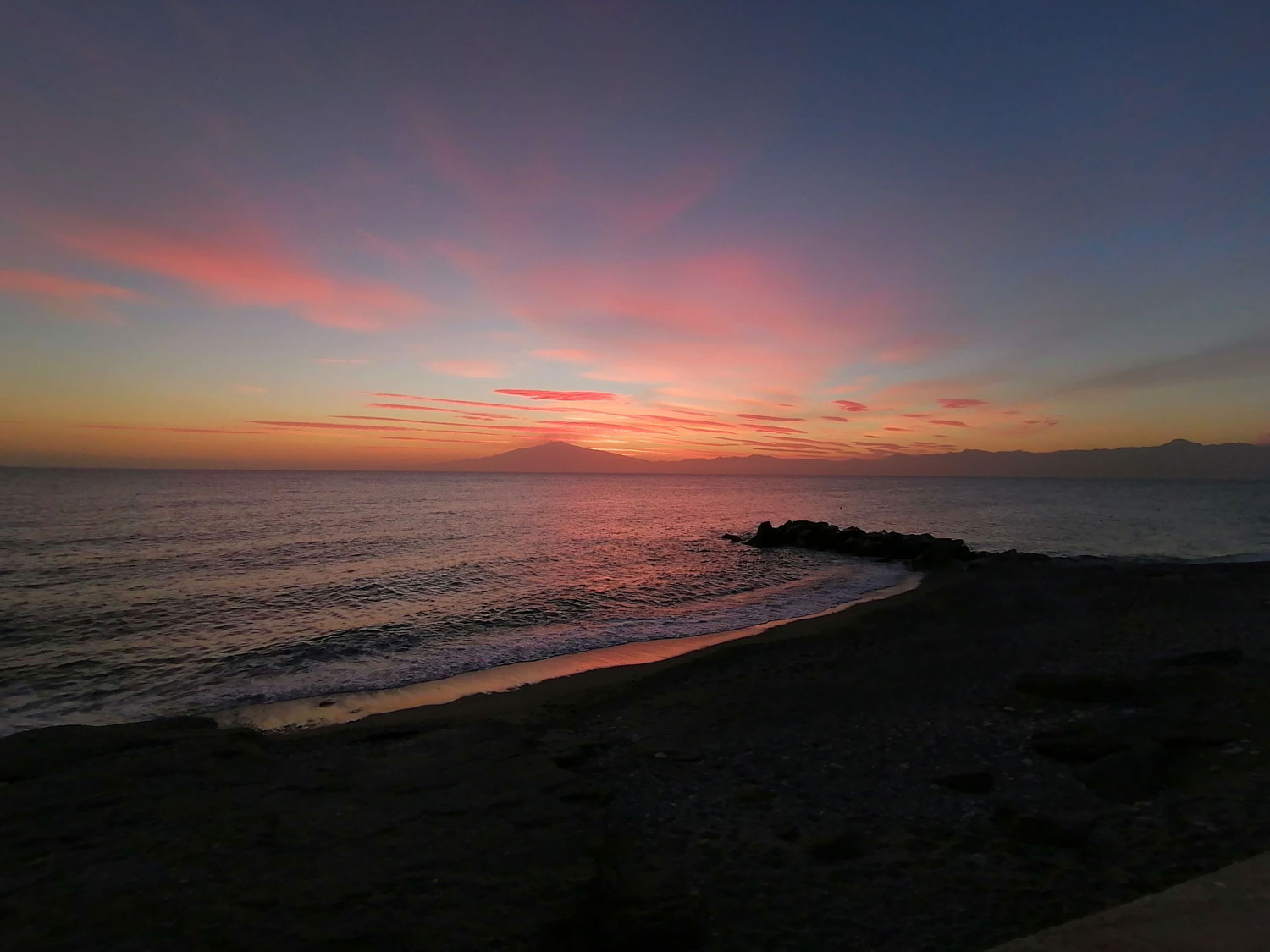
What is the significance of all this for us divers?
How did it go for us divers? Surely it has been an unusual year, to say the least. We belong to that category of people who are used to moving from city to city, between different areas and regions—especially for those not lucky enough to live by the sea. We found ourselves stuck in our own city, or in the luminous summer break, with the opportunity to roam within our own countries. However in diving, there are those who are used to travel to other continents or going on expeditions to remote locations, and who can't wait to organize meetings, to attend events and shows to meet up with friends who share their adventures. But sadly, for a year now, we have been forced to temporarily make renunciations.
And what about me, a scuba diver in lockdown within a short walk from the sea?
I have the privilege and pleasure to work in the Scilla Diving Center. It's not just a workplace but kind of a family to me. I did my open water course there in 2011, then became a dive guide and now I'm an instructor at the center near the sea of the Strait of Messina. I'm still here with my lifelong buddies, with guests that come back every year—many of them have become real friends. I pleasantly and passionately work with management along with other instructors and the owner of this incredible place, Paolo Barone.
Our commitment here continues past the end of the diving season. This time of the year is generally dedicated to recharging our batteries a bit, at least for those of us who work in a diving center. There are few tourists and divers here during wintertime, though we spend time preparing for the next season; storing the boat, testing tanks and doing equipment maintenance. On the other hand it is the time of the year when we have more freedom. In fact, while during summer each of us is busy with our own students and divers to guide through the seabed, now is the time when instructors and guides get together and take our own dives just for pleasure, and have a chance to share our experience.
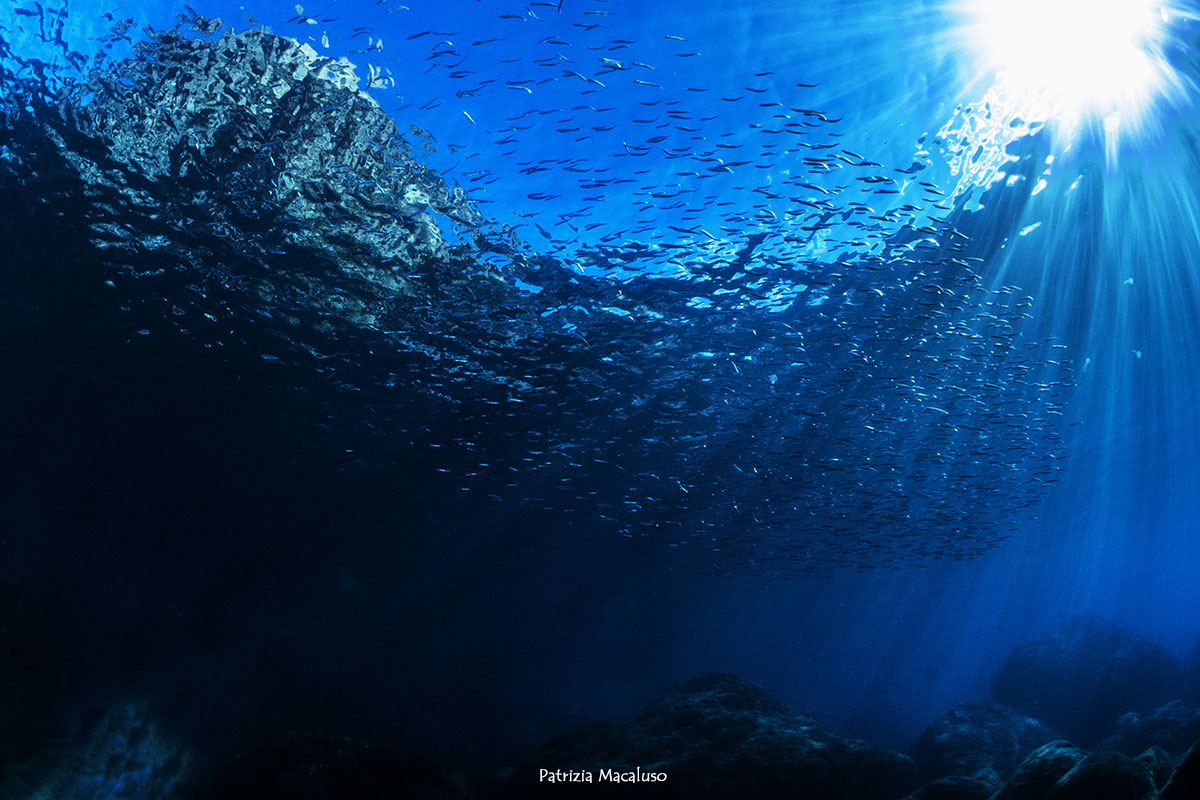
The myth of Scilla: A spell that bewitches!
We, the ones that have grown up here, or have chosen this place as a second home, are very linked to Scilla. Although we can't explain exactly why, its beauty is unquestionable, which can be seen as soon as you walk through the ancient suburb of Chianalea (where the Scilla Diving Center is based) or admire the beach of Marina Grande. In fact, every time we look at the waterfront from the top of the main square, Piazza San Rocco, we can’t help saying to ourselves—perhaps Scilla really is the most beautiful place in the world. Though each of us has leaned over that balcony a million times, and crossed the old fishing village two to four times a day for more than thirty years, the real magic of this place remains—not to mention the added beauty nearby beneath the sea.
For those who were born here or those who fell in love with this place, Scilla has something magical that none of us are able to explain. Like Paolo, who born in Rome and decided 31 years ago that his dive center must be here and adopted the place. Whoever has undergone this spell knows what I’m talking about, because Scilla never ceases to bewitch you; it's always enchanting.
After all we are talking about a place with an air of ancient times. According to Greek mythology Scylla was a beautiful naiad, or water nymph, that used to bath in the water of the Tyrrhenian sea in Zancle. One day she met a being who was half-human and half-fish named Glaucus, an ex-fisherman who had been transformed into a sea god. The nymph, scared to see the creature ran away. But Glaucus had been struck and feel in love with her immediately, so he went to the sorceress Circe to obtain a spell that would make Scylla fall in love with him.
But Circe got furious because Glaucus was a god and couldn’t love a mortal. Circe ask Glaucus to join her but he refused. The enchantress, mad over his denial, wanted to take revenge. She poured a baleful potion into the source of water in which Scylla bathed, and it transformed her in a monster, with long snake-like legs each equipped with six dog’s head. She was so scared of herself, Scylla jumped into the sea and found refuge in a cave in the abyss.
There, in the Strait of Messina, she was joined by Charybdis, a gigantic, voracious monster with a huge mouth. According to Homer, Charybdis could swallow and spit out large quantities of water—enough to drown a whole ship. This is the legend of the Strait of Messina, a piece of sea dominated by these two frightening creatures. On the Calabrian shore the monster of Scylla, a rock shoal that could eat you. And on the other side of the coast, Charybdis, the whirlpool.
This Greek myth attempts to explain the origin of the famous vortices that distinguish this portion of the sea, with its characteristic strong currents that once terrified sailors who crossed the Strait of Messina. For divers it has resulted in a mandatory law: never dive in Scilla without looking at the tide table first or you risk being “eaten.”
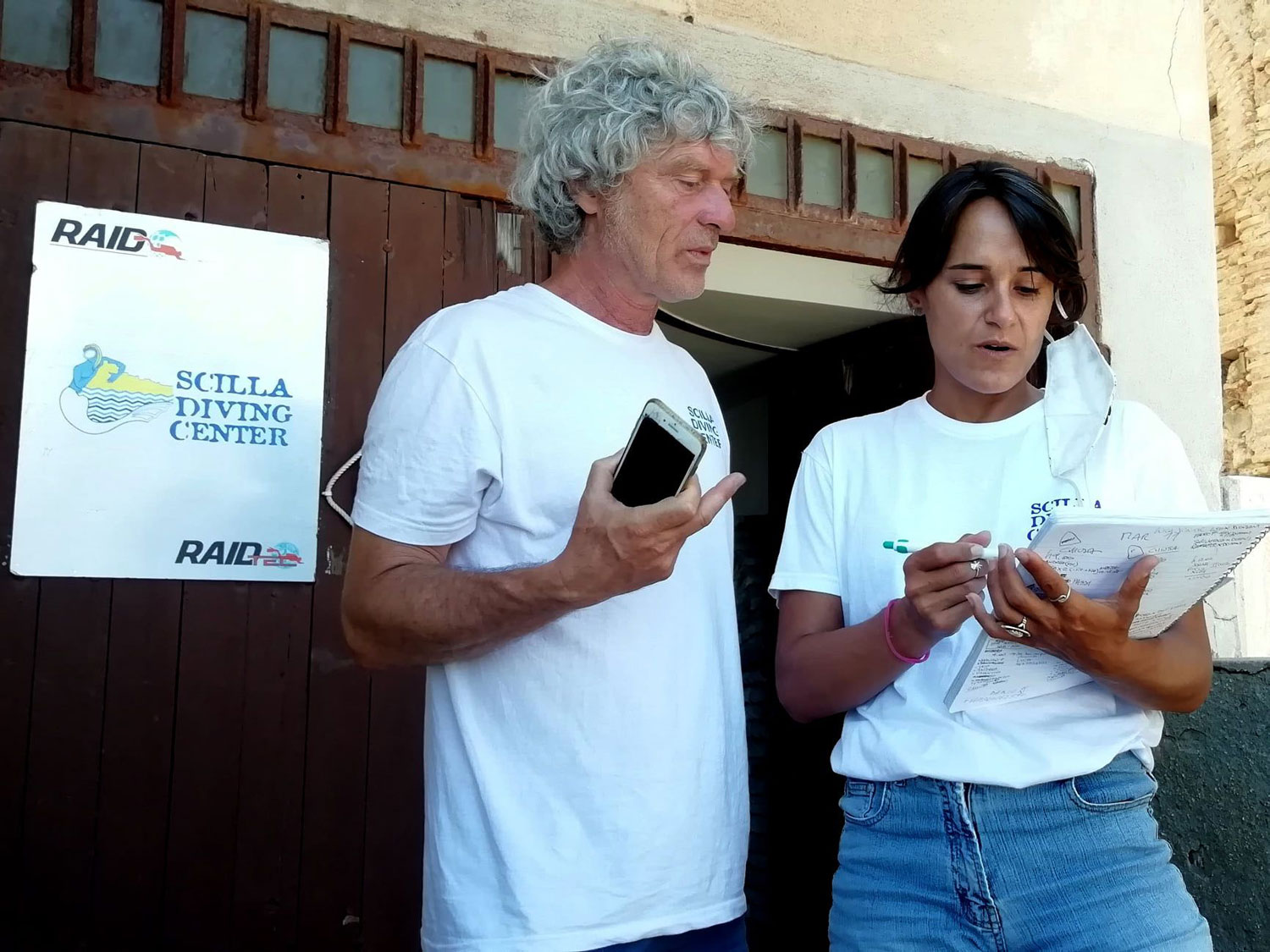
My plans went up in smoke
Because of the isolation we have been suffering since last spring, this year I wanted to plan a trip, and my plans were a little different this time, at least for the first few months after summer season and my commitment to the diving center was over. My idea was to buy a new car, load it with all of my equipment and drive around the country to the many beautiful and important dive sites that I hadn't explored yet with Frederica, my friend and divemaster at the Scilla Diving Center. Starting with the places closer to the South and arriving who knows where—our drive through Italy could take us anywhere, we started planning our dives sitting at the bar in Chianalea, within walking distance of diving, with a good glass of wine. We wrote the first must-see destinations on a mat, and our list started to get quite long.
Unfortunately we had to postpone our dream trip as new restrictions were postponed; we found overselves in a second lockdown. My new car arrived in October, but I had to leave it parked in front of my house. You can imagine how I regretted having to make such an expense, right now when it's so hard to work or plan projects for the future, with everything so uncertain. But I didn’t want to lose hope.
I told myself that I couldn't go far, but hey, I live in a place that is located in the middle of two seas— the Ionian and the Tyrrhenian Seas. Reggio Calabria is on the Strait of Messina, a place that has given rise to legends, mythological tales, a place that has left its mark on all those passed by since the time of Homer. And so, while our region was designated by the color yellow, I didn’t miss the opportunity to go scuba diving right here, in my hometown, or just a few kilometers away.
|
No travel? No problem… Discover the new Dive Local plan by DAN Europe, protecting you while you dive local |
The scuba origins of “La Montagna”
Among the dives that divers who visit the Strait of Messina place on a podium is the Montagna (or "the mountain"), which is a rock monolith that rises 20-meters high from the Scilla seabed. The surrounding shoal is very well known, not just locally or in Italy but by the international community. Considered one of the most beautiful dives in the Mediterranean, it really is a jewel of the sea and its fame is largely due to Paolo Barone. It was Paolo who first brought diving to this area, and in doing so changed its fate from a scuba diving perspective. He subsequently opened the Scilla Diving Center on April 12th, 1990, at a time when there were many fewer Italian diving centers.
Roman by birth, Calabrian by adoption, Paolo saw the Montagna for the first time by chance, during a solo dive. It was on July 16th, 1987. The shoal was already known by locals as “Dog’s Tooth” (Dente di cane), but Paolo heard about it only after he dived there and his enthusiasm for the site prompted him to share his find. “I’ve seen a mountain, an enchanting mountain,” he exclaimed to his buddies after the dive while still wearing his equipment. Who knows why they decided to not dive with him that day.
Paolo's enthusiasm came from his awareness that he had just seen the most beautiful place in the world above or below the water, at least to him. His friends were sitting at the Rock Bar (today the Dalì City pub) waiting for him. As soon as Paolo surfaced, he rushed out of the water still wearing his tanks to tell them about his discovery, fearing that it might have been a mirage or a place that would’t be able to find it again. Fortunately that was not the case; the place was real and Paolo subsequently returned again and again. And the name Montagna, taken from the then 19-year old Paolo's initial spontaneous description stuck. Though he returned countless times over the last 34 years he never grew tired of the place
Every year since the opening of the Scilla Dive Center, numerous divers come to admire the beauty of Montagna. As a diver and later a guide and instructor, I have descended on this paradise hundreds times. Nevertheless it continues to inspire and thrill me, maybe even more now then when I saw it for the first time. Not because it is more beautiful now, in fact, like other sites in the underwater world, the Montagna shows signs of wear.
My first meeting with the “Lady Shoal” took place when I was taking my advanced recreational course. At that time, I was very young as a diver, with little experience. However from my first glance I was bewitched with her and I fell into a stupor having such real beauty, a true marvel in front of my eyes for the first time. It had a huge impact on me, though I only saw but a part of it.
Today my emotions are even stronger because I am more aware of all that lives on that rock monolith and how delicate and precious that ecosystem is. It makes feel very lucky and privileged. I’m also a more experienced diver. I don’t have to think about my buoyancy or position so I’m entirely able to enjoy every relaxed kick through those unique gorgonians. And my growing skills enable me to dive deeper, opening up new endless opportunities to explore the Montagna more fully, and add to the emotions and my memories that I have collected from that place.
It was love at first sight to be sure, but one that hasn't dimmed as the years have passed by. It’s a rare thing, but maybe once in a lifetime you meet someone whom immediately enters your heart, never to go away. Rather than fading, that kind of love strengthens as time goes by, and finds new avenues for expression, and new plans in spite of life's difficulties. It is that kind of love, a huge fortune, we have found here in the sea of Scilla.

The inhabitants of this underwater paradise
This winter, with the diving center closed, plenty of spare time and my trip plans on hold, I’ve dedicated myself to dive in my heart place, this paradise just a few kilometers from my house. Gazing at the Montagna, the first thing that strikes you is the Paramuricea clavata aka sea-whips, a coelenterate that is normally red, but here in Scilla they are a peculiar bicolored version. In fact, the Montagna owes its popularity to these bicolored red-yellow “branches” of gorgonians that are so abundant here.
It is true that it’s not the only place where you can find them, however in all the dives we do in Scilla, we are literally surrounded by these “ramified” animals. At some sites even in a more spectacular way. But the Montagna has always been a unique place; who knows why? Its more accessible location allows divers to reach it by following the seabed that descends slowly, and doesn’t require a more challenging plunge down a line into the blue, like other shoals of the area.
Surrounded by these colonies of flowered invertebrates, what it strikes one is the contrast between the fiery colors of the fans that cover the interior wall, and the deep blue of surrounding waters. Sometimes they seem like a proper flower bouquet, when bunches of Clavelina lepadiformis, or light-bulb sea squirts attach themselves to the gorgonian branches. When the current , which runs south to north, increases, these tree-like formations start vibrating, like pinwheel moved by the wind, warning you of possible current up ahead. Because in the Strait of Messina everything is unpredictable, especially the flow of the tides.
Another peculiarity of the Montagna are its wonderful and floaty Cerianthus membranaceus or tube anemones. Four of them can be found at the foot of the Mountain along the landslide between 32 to 42 meters. The first, at the depth of 32 meters, is the one that always catches my attention. It reminds me of the host of a show that's about to begin, or better, has begun with this first incredible encounter. I love to admire it without pointing my lights at it, because it has a color and peculiarity that others don’t have, not in this way. They are a light grey hue, with rich orange tips on its tentacle as if there were fluorescent light bulbs on its extremities. But as soon as you point your torch, they switch off; you can only discover their magic with your lights off.
The second anemone, at a depth of 36 meters, is the most famous, the most popular and the most photographed of the group. Big and majestic, it has reigned here for who knows how long. Divers that used to dive here in the ’50s remember it being in the same place it is today and about the same size. I think it must be an ancient animal. A unique show for its greatness, its position, its color. I’m not surprised why it is so papped being lighter and brighter.
The third and the forth are the smaller of the family, but also who knows how old they are. These last two Cerianthus, at depth of 40 and 42 meters respectively, astound every diver that sees them. In their case, the orange luminescent light bulbs at the end of each curly tentacle amaze and enchant everyone, for real.

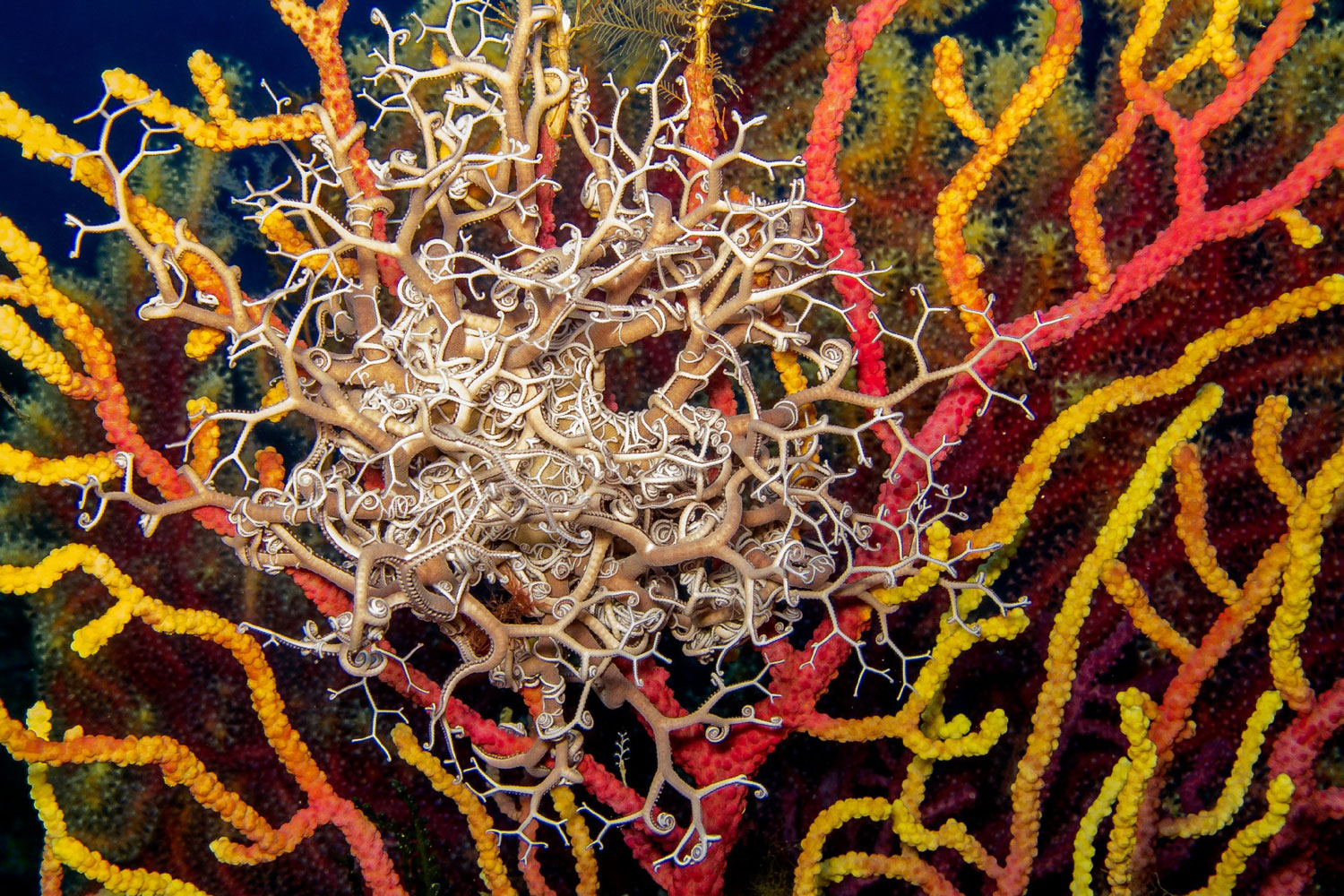
And the show goes on! You can see Astroides calycularis or stony cup corals. As you climb the Montagna and reach the summit, the gorgonian colony give way to these flashy madrepore, with their bright orange polyps.
In the surrounding peaks, located near the principal body of the shoal, the forest of Paramuricea becomes a garden of sea daisies (Parazoanthus axinellae) as you climb higher. There is also the Astrosparthus mediterraneus, or basket stars, which have returned over the last few years to start a strong, long-lasting bond with a branch of gorgonian. If you look around, groupers can be spotted in open water coming in schools or alone—these are usually very large and sedentary specimens who act like old friends. We recognize some of them and give them names like Baby boom, so named by Marco or Scarlett. It is Francesco’s favorite.
These wonderful fishes with their pouty expression, can not be easily approached, they must be admired from a distance. They are always at the entrance of their den, ready to slip into it as soon as you try to close the gap. On the other hand, there is the red scorpionfish (Scorpaena scrofa), which is always calm and still. You can easily approach it slowly. Even if you come as close as a centimeter away, it will hardly make an effort to move from its bed-rock. If you illuminate some the darkest corners of the rocks you will also find the mustachioed Forkbeard fish (Phycis physic) which swim in and out of ravines and holes in rocky walls, trading places with some big moray eel (Muraena helena).
Of course you will be totally spellbound by my beloved Anthias anthias, the swallowtail sea perch, which appear as clouds of ballet dancers wearing tutus; they are so elegant with their delicate color somewhere in between pink and orange and fins that looks like a soft veil. They hover over every rock and every corner of this underwater paradise. And if you're lucky, you may have one of those rare encounters where amberjacks and tunas speed by you as fast as missile, causing you to instinctively assume a defensive position, only to have them whiz by and vanish into the liquid horizon.
Here is my FIRST UNDERWATER VIDEO!!!
When winter comes
It’s the John Dory (Zeus faber), or as it’s called in Italian, San Pietro's fish that grabs every diver’s attention in the cold months, especially from January, where it can be seen in all its beauty. It is very special animal, with its squeezed silhouette and its fabled livery. Legend has it that the peculiar black dot on side among the background of golden stripes is the thumb print left by St Peter (that’s the origin of the Italian name), who was asked by Jesus to grab it and pull a golden coin out from its mouth or maybe to set it free from the nets. Actually, I think of that mark an “evolutionary gift”—a big false eye that is useful to confuse predators. Another peculiarity is its unique dorsal fin with long vibrant spines arranged radially. All that is left is to play some classic music to make it seem like a kind of an enchanting carillon. Watching it swim is a unique show.
Even though it leads a solitary life, on our last dive, we had the good fortune to meet five different specimens, all of them at a depth between 40 and 55 meters. What impressed me is that they really seem trust divers. You just have to get close to them without making any noise and trying to be very still as much as possible, like them. Suspended in the blue water, we slowly follow their movement using only our breath, as they slowly move their vibrant fins. It felt like a dance. They let themselves be gazed at for a while as if they had saved us a dance, observing us and always following us with their sharp eyes. But then it’s time for us to leave the dance floor, or they have had enough and make a dash to throw us off.
And this is the second one, John Dory’ show:
It's time for us to begin our ascent, but the dive continues. Our bottom time is over, so we start swimming back through the seabed toward lesser depths, but the beauty doesn’t end. Quite often, between 20 and 30 meters, the place is like an aquarium, and sometimes remains until the last centimeter—there are saddled breams, two banded breams, anchovies, salema porgies, octopuses, damselfishes, and fireworms. There are many different madrepores and various species of nudibranchs that change according to the season. There is so much to discover as you ascend to the surface, which is sometimes decorated with some elegant Cassiopea jellyfish, or stinging Pelagia noctiluca.
These are my dives post lockdown, but not the only ones. Some days I hit the road and drove up the Ionian coast to admire a totally different but still beautiful scenery such as the Bettolina shipwreck or Castelluccia cave in Lazzaro, the seabeds of Pellaro with its wonderful trumpetfishes, and even more interesting sites. Of course, we always stay within a few kilometers of Reggio Calabria, as mandated by Covid-19 restrictions. But that’s another story.
During these local diving days, I really re-discovered home, those places of heart that we sometimes take for granted without realizing that there is a precious treasure right in front of our eyes. I hope I have engendered some love for our own land, or better, our local waters. I know these are hard times, with restrictions, and not everyone is lucky enough to have the sea, or a lake, at hand. For those of you who don’t live by the water, I hope that you will be able to appreciate some of the beauty that we, the lovers of the underwater world, enjoy and will have the opportunity to admire again soon. In the meantime, I’ve tried to guided you with words and images so that you can appreciate the depth of this magic. So pack your bags: Scilla, your Scilla wherever it may be, is waiting for you!
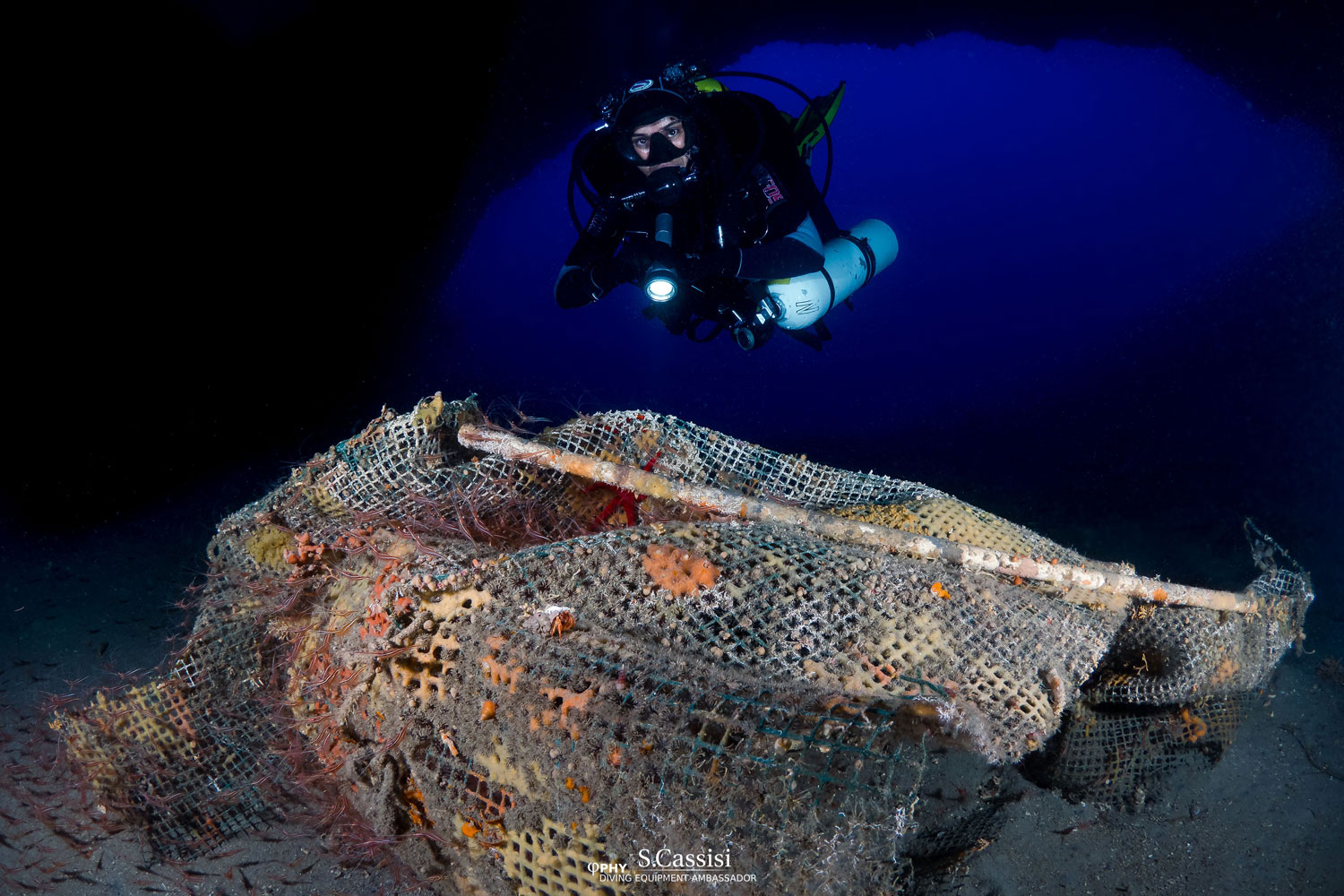
About the author
Cristina Condemi is a RAID diving instructor, staff member of the Scilla Diving Center and proud DAN Europe Member. She was born in Reggio Calabria and the sea of the Strait of Messina has always been her natural environment. A DAMS graduate (disciplines of Art, Music and Entertainment) at the University of Bologna, she has lived in Spain and in Wales. A dive guide in Scilla since 2014, she brings divers of all levels to discover the extraordinary seabed of Scilla and its creatures, with special care for protecting its fragile ecosystem: a care she always tries to pass down to her students. An enthusiastic ecologist, vegan, and animal-rights supporter, she started technical diving in 2018, sharing the story of her experience as a diver on the web. She currently collaborates with DAN Europe as a freelance translator.

Protect yourself while you dive local!
The new Dive Local plan covers you for all kind of diving activities, within your country of residence.
It's a new and affordable membership option which specifically supports local diving, while we all wait for travel restrictions to be eased.
Currently available in Belgium, France, Germany, Italy, Netherlands and United Kingdom.


